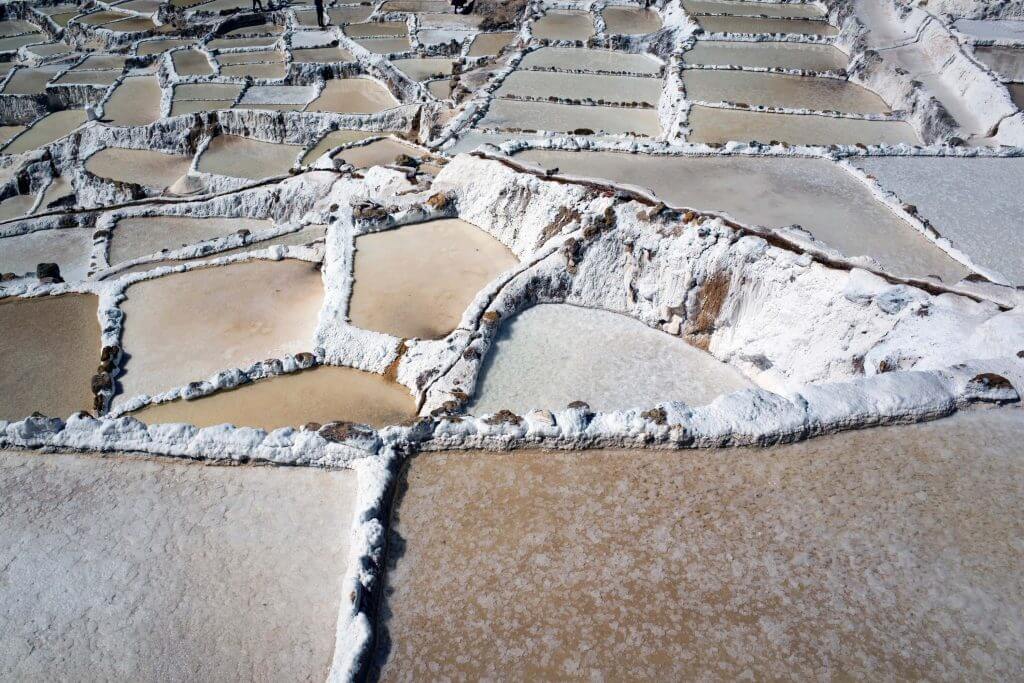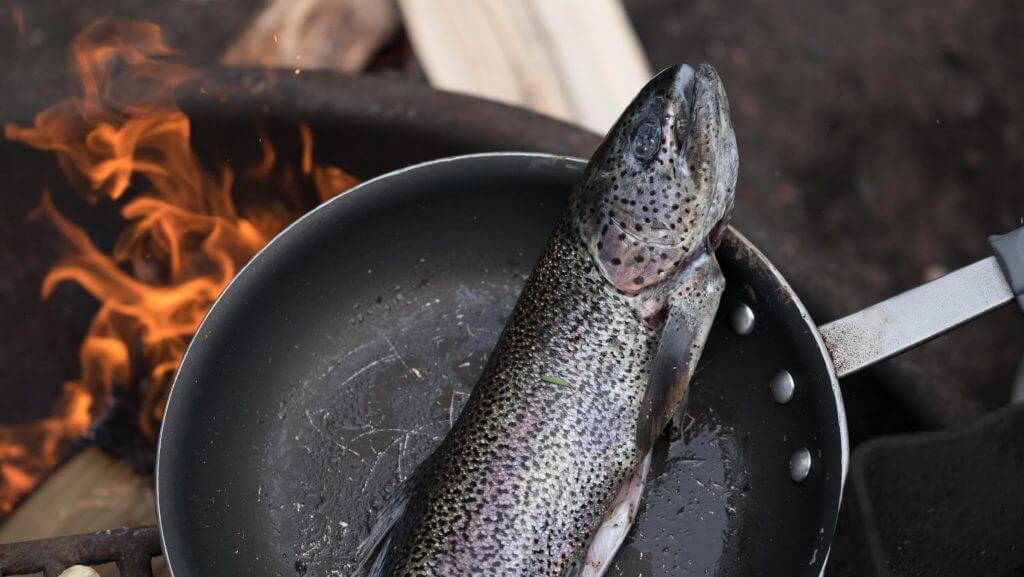 It’s a Saturday afternoon and you’ve got your feet kicked up on the coffee table. You are finally enjoying some time away from work when a news alert comes on. There’s been a state of emergency declared in your area.
It’s a Saturday afternoon and you’ve got your feet kicked up on the coffee table. You are finally enjoying some time away from work when a news alert comes on. There’s been a state of emergency declared in your area.
What do you do?
Instead of evacuating with everyone else, you have a plan. You’ve prepared for this moment.
You have everything you need to survive anything. Or do you? You check your storage room for salt. Do you have enough to get you through an unknown period of time?
While salt may seem like an insignificant thing to be short on, in reality, you’re not going to last long without it. There’s a reason why it was key in early civilization and why people fought hard for it. Any good survivalist that’s worth their weight, is going to have it high on their list. Check out these reasons to start storing salt for when SHTF.
Salt’s Importance Throughout Time
Let’s start somewhere around 6,000 B.C. In the Middle East, salt was traded and used in religious ceremonies. It became a highly valued commodity.
The production of salt was regulated due to its use as currency in certain cultures. Most of us can also recall from our high school history classes that it was used to preserve meat on long, oversea voyages for explorers.
When it comes to the human diet, salt is vital for the body. Also, it has many proven medicinal properties. Your body cannot live without it.
It’s used to send nerve signals, maintain proper body fluid balance, and contract your muscles. As you can see, these functions are pretty important in a survival situation.
Epsom salt can be a lifesaver. This type has a different chemical composition than table salt, so don’t go throwing it on your steak. It can be useful in mitigating inflammation and helping with pain.
Salt’s Purposes and Benefits
Food Preservation and Preparation
When the electricity is out for an extended period and you have food you need to preserve, salt is key. By salting the food, it inhibits the growth of germs by osmosis as it draws water out of microbial cells. Having preserved food is a great addition to your canned food inventory.
This is also how the curing process works for making food like jerky. In our modern world, nitrites and sugars are usually used in most of the products sold on the market.
The curing process can take some patience, so make sure you do your research beforehand. Many also smoke their meat to aid the process and prevent bacteria from growing.
If you’re not crazy about either of those methods, you can make a brine. This water-based solution will help preserve meat for extended periods of time. Simply coat the meat in the solution and let dry. It’s that simple.
[su_highlight]Related: read about the best water filtration systems for survival[/su_highlight]
By combining salt with sugar, you can preserve meat to achieve a more balanced aftertaste. Start by covering the meat with the sugar and salt mixture, pack it tightly into jars and cover with cheesecloth.
Keep the jars stored at a temperature slightly above 32 degrees Fahrenheit for a month, then remove and cover with plastic wrap. It should stay good for a while.
Healing Properties and Other Medical Uses of Salt
In an emergency situation, there’s a chance you won’t have access to modern medicine, which is another important reason to have this essential compound around. Certain types have healing, antiseptic, and bactericidal qualities.
Minor things, like pain in your gums, toothaches and sore throats can be remedied by a simple saline water gargle. You can also aid bee stings and bug bites by rubbing a saline mixture over the area for relief from itching.
If you’ve walked through poison oak or ivy, bathing in a saltwater mixture helps clear the rash quickly.
Epsom salt is another beast of its own. Soaking in an Epsom salt bath can help with treating athlete’s foot. You can also use this type to exfoliate your skin and keep dry skin at bay.
Got a splinter while chopping firewood? Soak it in Epsom salt and water. After your finger soaks, your skin and the splinter will soften. This will make it easier to remove the splinter and the salt will reduce the chance of infection.
Feeling a little allergenic? Rinse your sinuses with a saline mixture. This should help clear things out.
Household Chores and Maintenance
Not only is this compound a miracle element for your body, it also pulls its weight around the house. You can use it to remove rust, clean cast iron skillets, cleanse a cutting board and deter rid your home of pests.
To remove rust, start by making a mixture. You’ll take six tablespoons of salt and two tablespoons of lemon juice, and mix them until you get a paste. Apply the mixture to a rusty spot, take a dry cloth and rub the rusty area. When it’s done, rinse the area and dry well.
When you need to clean a cast iron skillet, make a paste of salt and water and scrub the skillet until it’s clean. The grittiness of the salt should clear food while keeping your skillet abrasion free.
Wooden cutting boards will gather odors over time, especially from foods like onions. You can use the same technique when cleansing a wooden cutting board. Table salt or Epsom salt will do the trick. Go light on the scrubbing and rinse with water.
The last thing you want in an emergency shelter situation, are bugs invading your house. As a pest deterrent, sprinkle salt around doorways, window sills, and other entry ports to deter ants, spiders, and other bugs from coming in.
Storing Your Salt Inventory
Lastly, let’s talk about how to keep your stash safe so that when you do need it, it’s still good. Here’s some information on certain types you might be curious about storing.
- Canning and pickling salts: Pickling salt is a good type to keep around, especially to increase your food variety. Pickling salt can usually be stored indefinitely.
- Iodized salt: Iodized, more commonly known as table salt is one of the most important types to store. It will give you the iodine you need to stay healthy, and you will likely want it to season your food with. Start with a year’s supply, which is about three to five pounds per person. Keep it in an airtight container. This type has an indefinite shelf life.
- Epsom salt: This type should keep well, but might clump over time so keep it away from moisture. This type is not edible.
- Pink Himalayan Salt: This type has been catching on to the mainstream. It isn’t processed like table salt, so it keeps more minerals. Celtic sea salt and sea salt are similar. This type can usually be stored indefinitely as well.
- Salt licks for livestock: If you have livestock around, don’t forget they need it, too!
Three to five pounds of salt per person is a good place to start. We recommend pouring it into gallon Ziploc bags and placing those in an airtight plastic container.
Don’t store it in any metal containers. Salt can pull dangerous chemicals out of the metal.
Storing salt is one of the easiest and most important places to start when prepping for survival. It’s vital for your body and for a healthy home.
If purchasing that much salt at once is overwhelming, pick up an extra container once a month or once every few trips to the grocery store. You should have the recommended amount in no time.
When SHTF, you’ll be glad you did.
Related Survival Resources:

